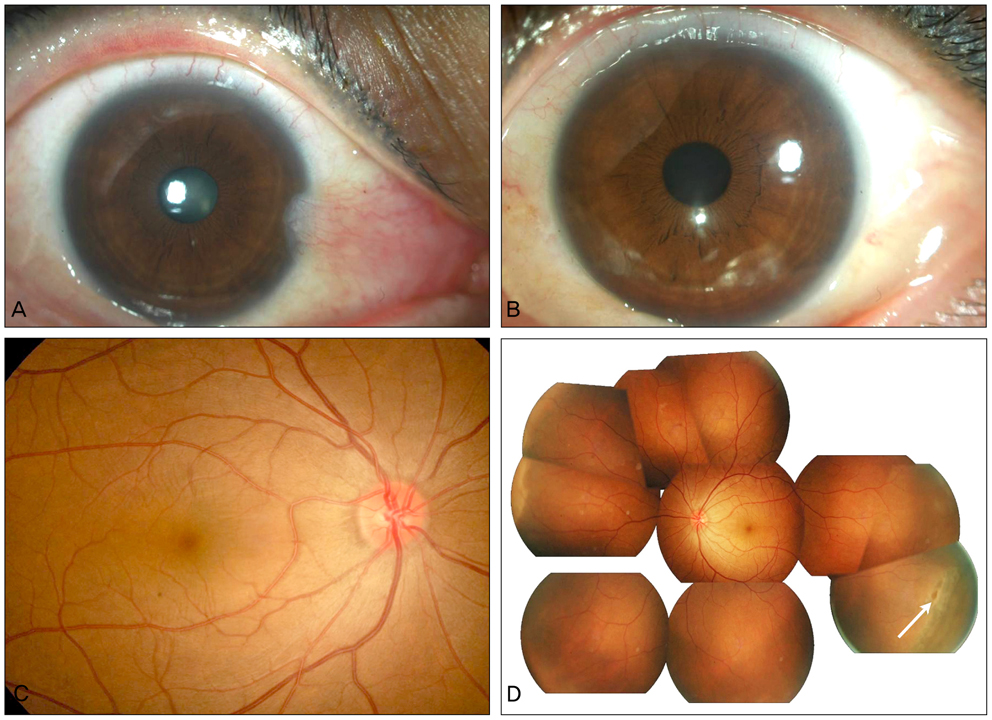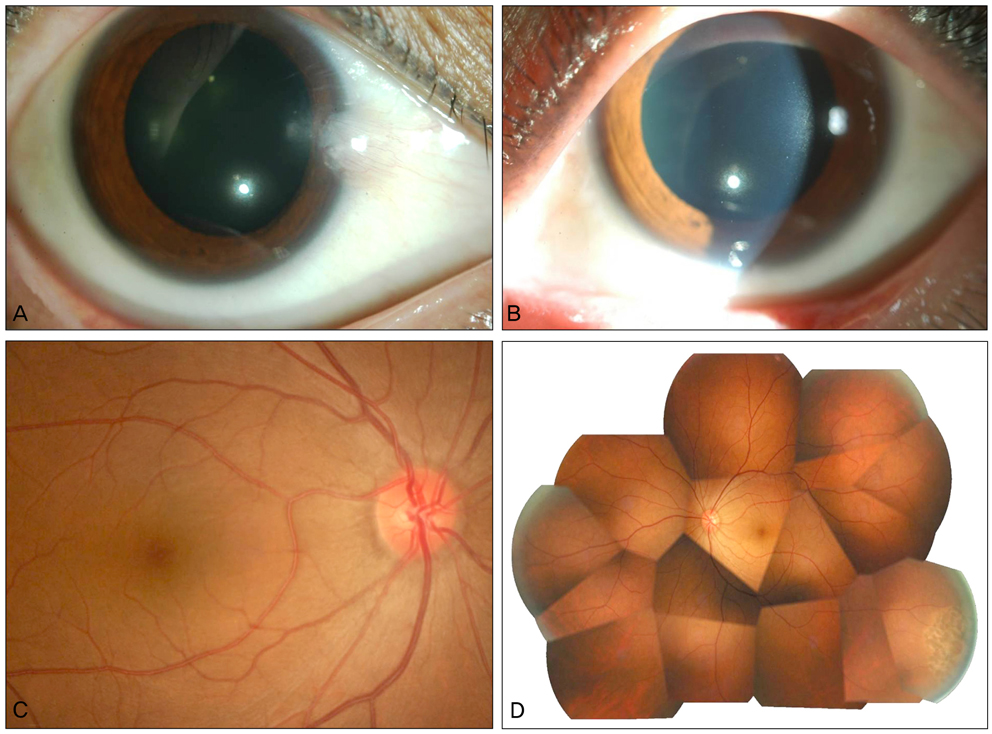Korean J Ophthalmol.
2011 Jun;25(3):214-217. 10.3341/kjo.2011.25.3.214.
Acute-Onset Bilateral Myopia and Ciliochoroidal Effusion Induced by Hydrochlorothiazide
- Affiliations
-
- 1Department of Ophthalmology, Seoul National University Hospital, Seoul National University College of Medicine, Seoul, Korea.
- 2Department of Ophthalmology, Seoul National University Bundang Hospital, Seoul National University College of Medicine, Seongnam, Korea. sejoon1@hanmail.net
- KMID: 1010032
- DOI: http://doi.org/10.3341/kjo.2011.25.3.214
Abstract
- The authors experienced two cases of hydrochlorothiazide (HCTZ)-induced acute-onset bilateral myopia and shallowing of the anterior chambers. Two middle-aged women taking HCTZ, a sulfa derivative, visited our clinic complaining of acute bilateral visual deterioration. Both had good visual acuity without corrective lenses before taking HCTZ. A complete ophthalmologic examination revealed bilateral myopic shift, intraocular pressure elevation, shallowing of the anterior chambers, choroidal effusions, radiating retinal folds, and conjunctival chemosis. Approximately one week after HCTZ discontinuance, all ocular changes disappeared completely. Physicians should be aware of the adverse ocular effects of HCTZ and should manage patients accordingly.
MeSH Terms
Figure
Cited by 1 articles
-
A Case of Bilateral Acute Angle Closure Attack Induced by Common Cold Medication
Eun Hee Hong, Min Jee Lee, In Seok Song
J Korean Ophthalmol Soc. 2016;57(2):334-340. doi: 10.3341/jkos.2016.57.2.334.
Reference
-
1. Sankar PS, Pasquale LR, Grosskreutz CL. Uveal effusion and secondary angle-closure glaucoma associated with topiramate use. Arch Ophthalmol. 2001. 119:1210–1211.2. Guier CP. Elevated intraocular pressure and myopic shift linked to topiramate use. Optom Vis Sci. 2007. 84:1070–1073.3. Li J, Tripathi RC, Tripathi BJ. Drug-induced ocular disorders. Drug Saf. 2008. 31:127–141.4. Beermann B, Groschinsky-Grind M, Rosen A. Absorption, metabolism, and excretion of hydrochlorothiazide. Clin Pharmacol Ther. 1976. 19(5 Pt 1):531–537.5. Geanon JD, Perkins TW. Bilateral acute angle-closure glaucoma associated with drug sensitivity to hydrochlorothiazide. Arch Ophthalmol. 1995. 113:1231–1232.6. Boentert M, Aretz H, Ludemann P. Acute myopia and angle-closure glaucoma induced by topiramate. Neurology. 2003. 61:1306.7. Rhee DJ, Goldberg MJ, Parrish RK. Bilateral angle-closure glaucoma and ciliary body swelling from topiramate. Arch Ophthalmol. 2001. 119:1721–1723.8. Craig JE, Ong TJ, Louis DL, Wells JM. Mechanism of topiramate-induced acute-onset myopia and angle closure glaucoma. Am J Ophthalmol. 2004. 137:193–195.9. Fraunfelder FW, Fraunfelder FT, Keates EU. Topiramate-associated acute, bilateral, secondary angle-closure glaucoma. Ophthalmology. 2004. 111:109–111.10. Kerimoglu H, Tokgoz M, Ozturk B, et al. Topiramate-induced acute-onset myopia and central corneal thickening: Pentacam Scheimpflug imaging findings. Can J Ophthalmol. 2009. 44:222–223.11. Krieg PH, Schipper I. Drug-induced ciliary body oedema: a new theory. Eye (Lond). 1996. 10(Pt 1):121–126.12. Desai CM, Ramchandani SJ, Bhopale SG, Ramchandani SS. Acute myopia and angle closure caused by topiramate, a drug used for prophylaxis of migraine. Indian J Ophthalmol. 2006. 54:195–197.
- Full Text Links
- Actions
-
Cited
- CITED
-
- Close
- Share
- Similar articles
-
- Bilateral Acute Myopia and Angle-Closure Due to Ciliochoroidal Effusion in Vogt-Koyanagi-Harada Syndrome
- A Case of Phentermine Hydrochloride Induced Acute Myopia and Acute Angle Closure
- Hydrochlorothiazide induced photosensitivity
- A Case of Bilateral Malignant Glaucoma with Ciliochoroidal Detachment
- A Case of Phototoxicity due to Hydrochlorothiazide



